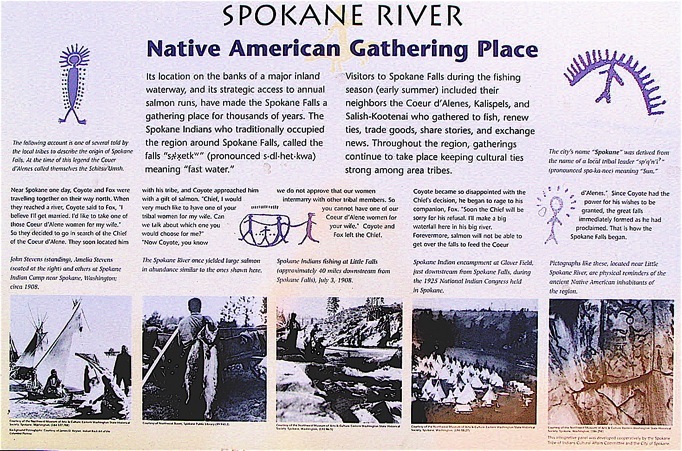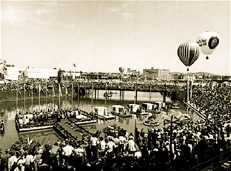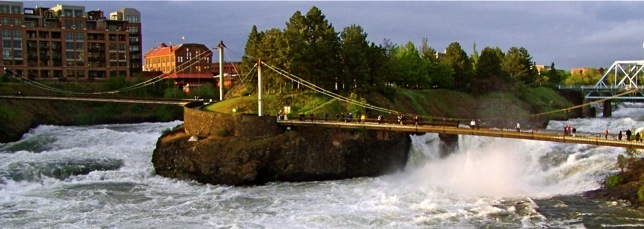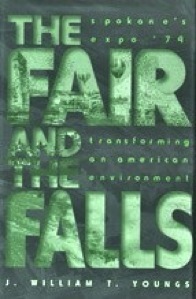Restore our Waterfalls


Spokane is unique in the United States as a major city that enjoys spectacular waterfalls within its downtown area. The Spokane Falls are the recreational and spiritual center of the City of Spokane. As Terry Lawhead explained in the November 4, 2004, Spokesman-Review, “water and its landscapes create unique affinities for people.” Spokane’s waterfalls have extraordinary historic, cultural and economic significance for the community.
The value of Spokane Falls will only increase. Riverfront Park attracts large numbers of visitors each year. In addition, various commercial, educational and civic developments above and below the Falls are now in planning, including the Mobius Science Center at Michael Anderson Plaza (which will overlook the Upper Waterfalls), the University District, the Spokane River Gorge Park below the Falls, and development of various residential properties.
The Upper Falls were originally a free-flowing river where Native Americans from throughout the region gathered, fished, and traded.
The Spokane Falls are unique and important. On May 1, 2009, Sierra Club, CELP, and Avista reached a settlement that restores water to Spokane Falls. After nearly a century, the waterfalls will have water 24 hours a day, 7 days a week.
These Falls, which have fallen further,
which sit dry and quiet as a graveyard now -
These Falls are that place where ghosts of salmon jump,
where ghosts of women mourn their children
who will never find their way back home. ...
~ Sherman Alexie,
excerpt from “The Place Where Ghosts of Salmon Jump”


Interpretive sign on the South Bank of Lower Spokane Falls, just steps from City Hall. The City should advocate for restoring the waterfalls. Spokane is unique in the United States as a major city that enjoys spectacular waterfalls within its downtown area. Photo: John Osborn
Expo ’74 opening day with 85,000 people gathered at Spokane Falls to celebrate the first environmental worlds fair. Five million people visited Spokane Falls that summer. (photo: Spokane Public Library)

Historic Spokane Falls during high flow. On May 1, 2009 -- almost 25 years to the day when Spokane welcomed the world to Expo ’74 at Spokane Falls -- Sierra Club, CELP, and Avista reached a settlement that restores water to Spokane Falls all year long. In this historic settlement, Sierra Club and CELP were represented by the University of Washington Berman Environmental Law Clinic. After nearly a century, the waterfalls will flow with water 24 hours a day, 7 days a week -- and never go dry.
Restoring Spokane Falls
For the historic significant of these waterfalls, and the ongoing story to restore Spokane Falls.
The Fair and the Falls
J. William T. Youngs
Winner of a 1997 Washington State Governor's Award
This wide-ranging history of a mid-sized western American city chronicles the coming of white settlers and their exchanges with the Native Americans of the region. It documents the harnessing and exploitation of the Spokane River and its beautiful falls for energy to run mills and street lights, stores, and homes; and the impact of the railroads. Central to this distinguished, versatile author's narrative is the theme quoted by one of the key figures in Spokane's recent urban history, King Cole: "To me, the center of the city . . . just by geographical and psychological position, the center of the city is its heart . . ."
Thus, at the heart of this meticulously researched account, is the growth and decay of Spokane's inner city by the falls, as its economy ebbed and flowed, and the reclamation of the falls through the resounding success of Spokane's World's Fair-Expo '74.


